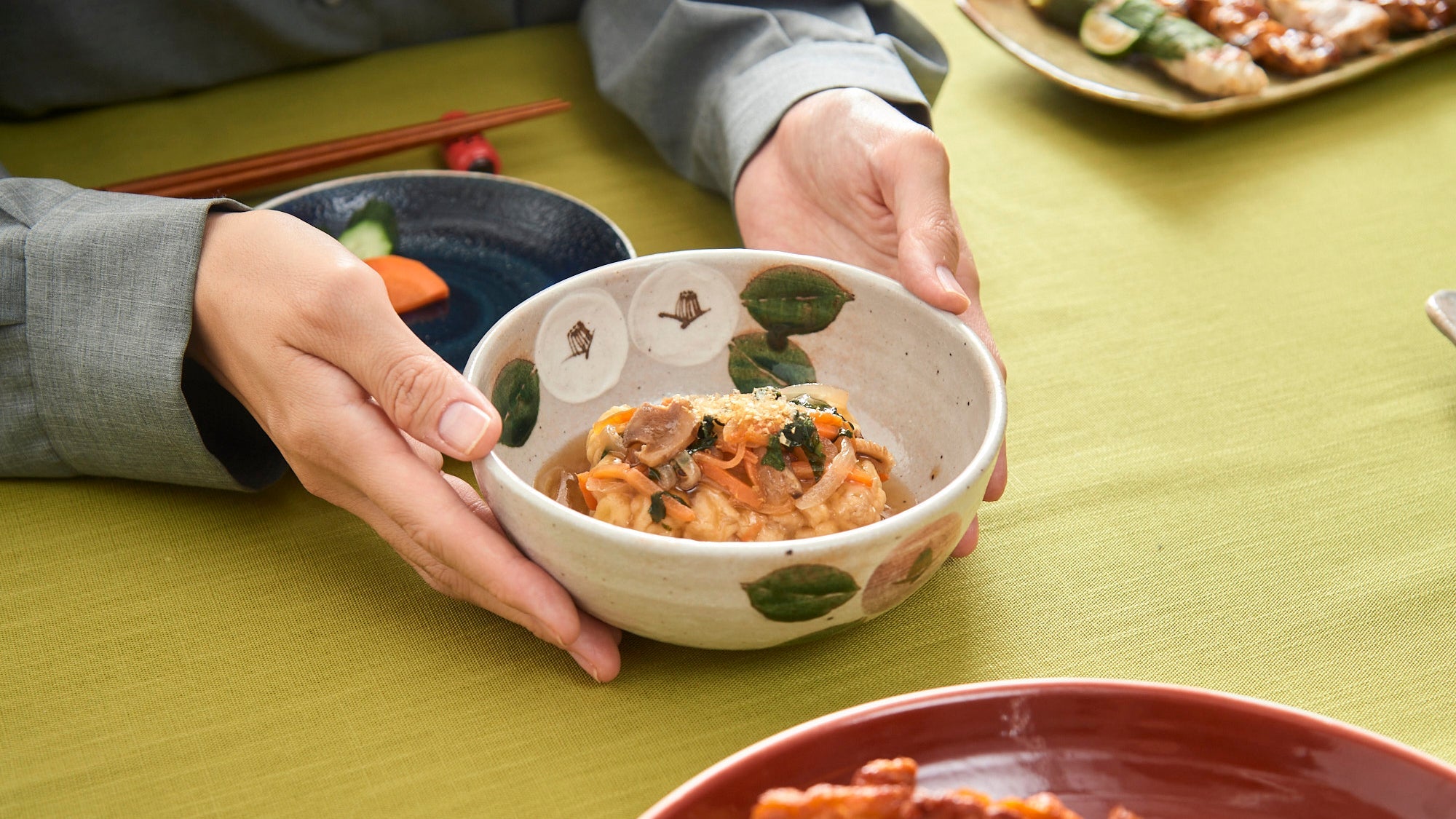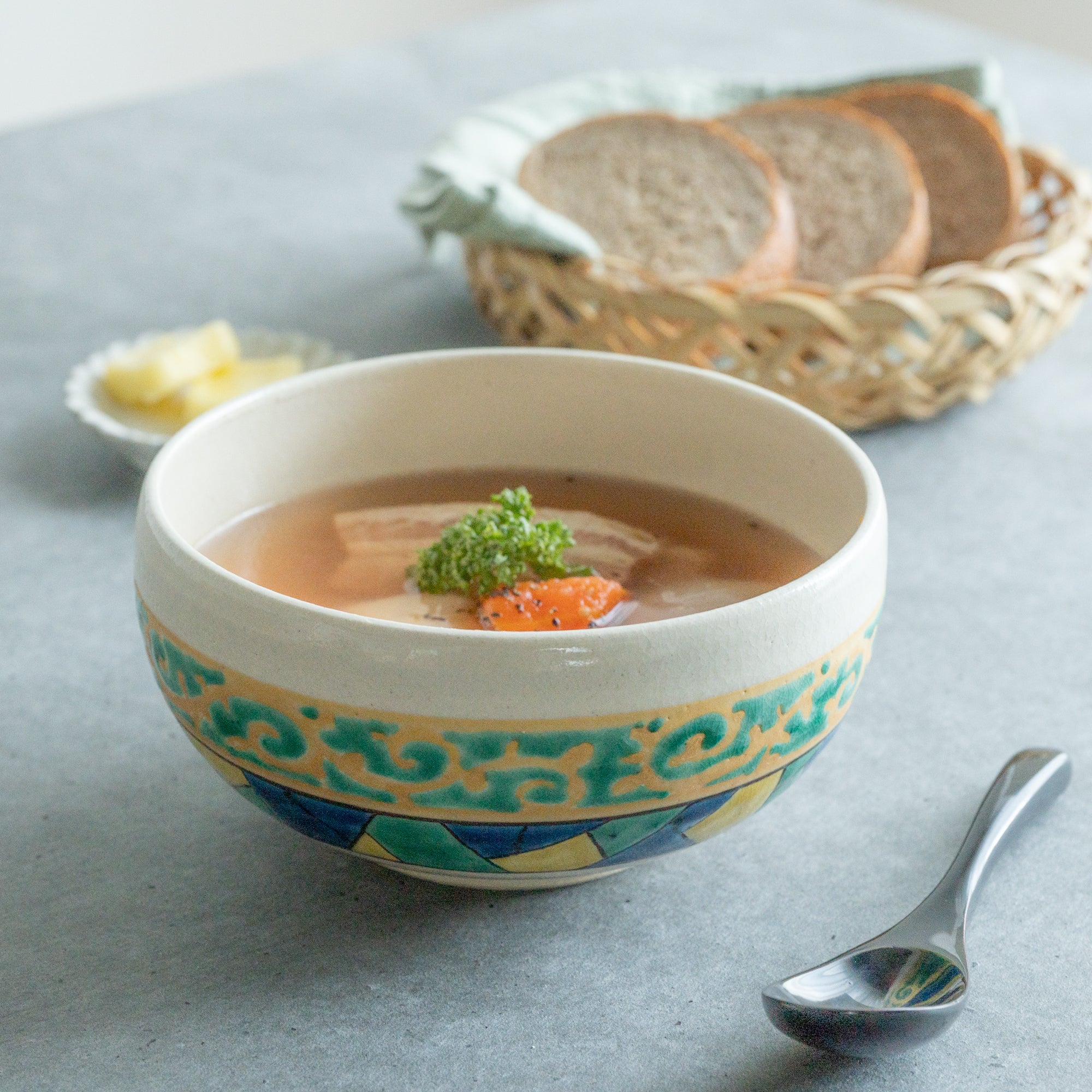
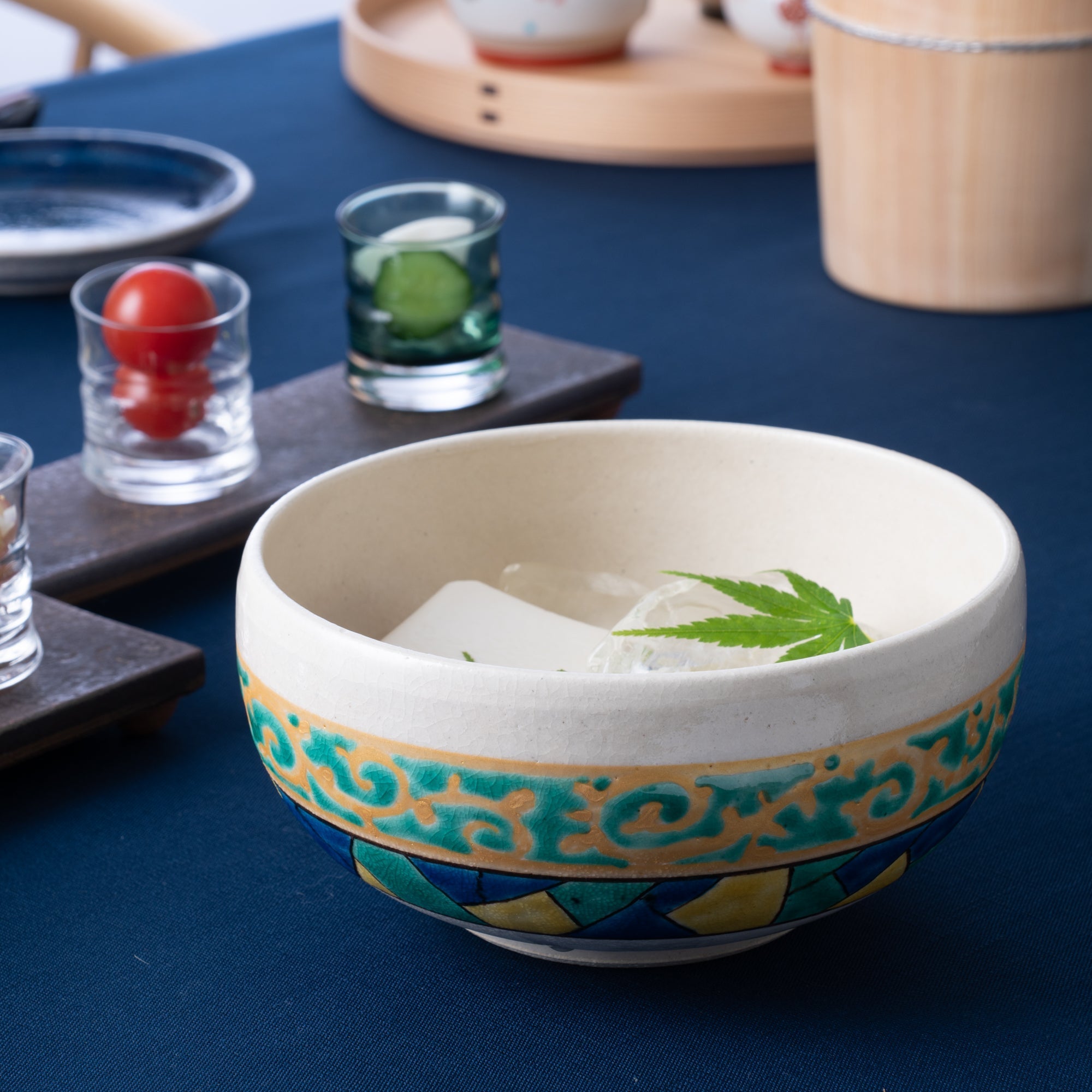
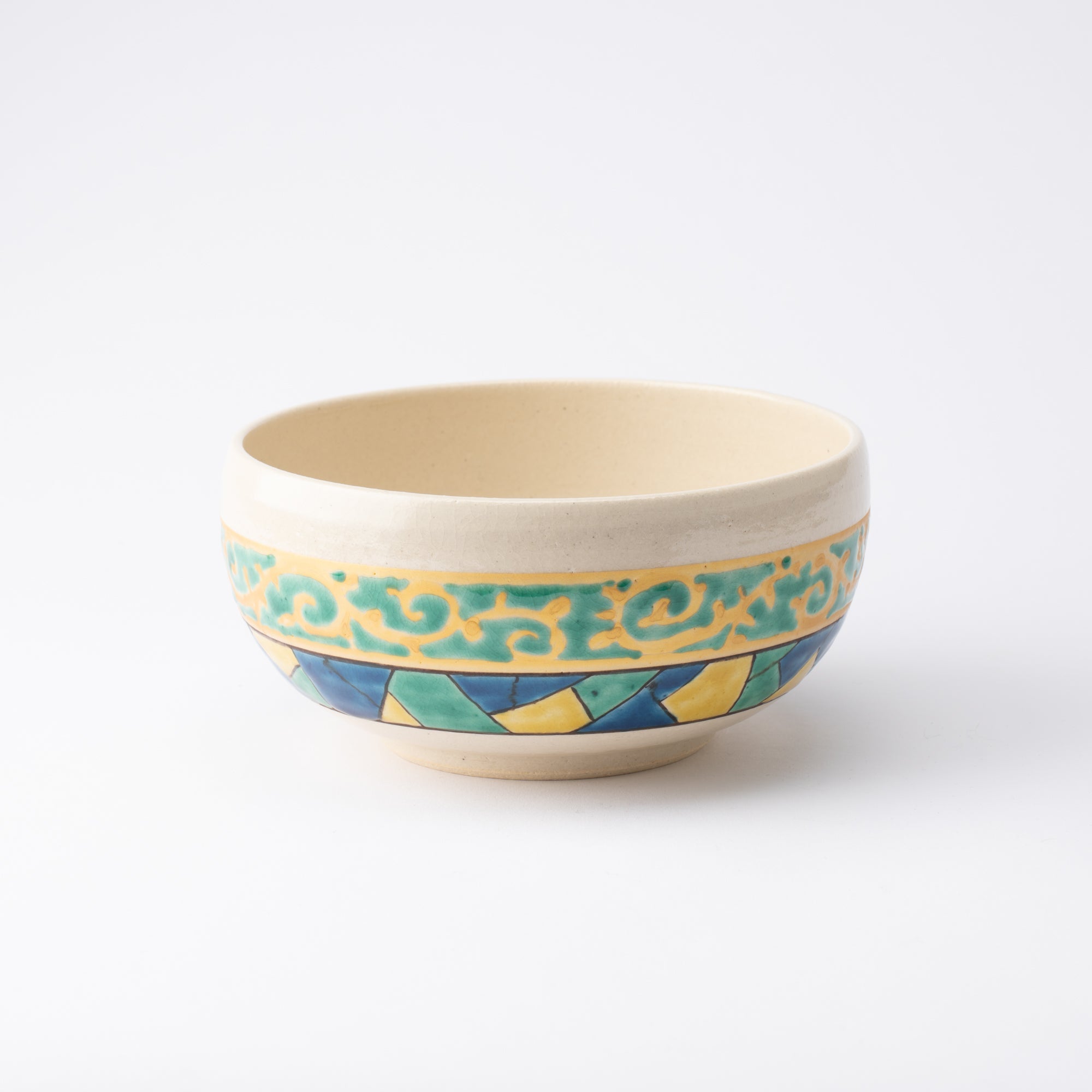
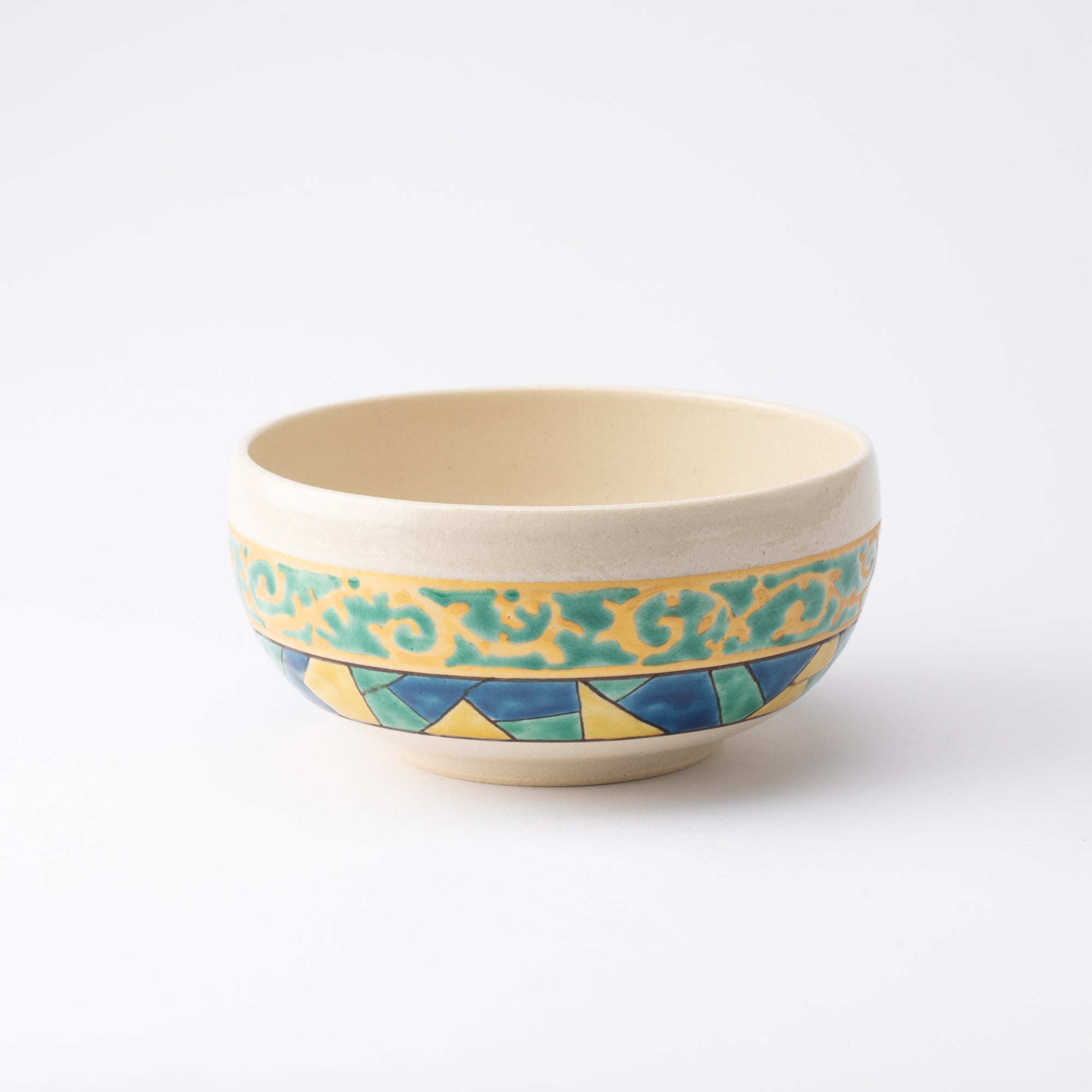
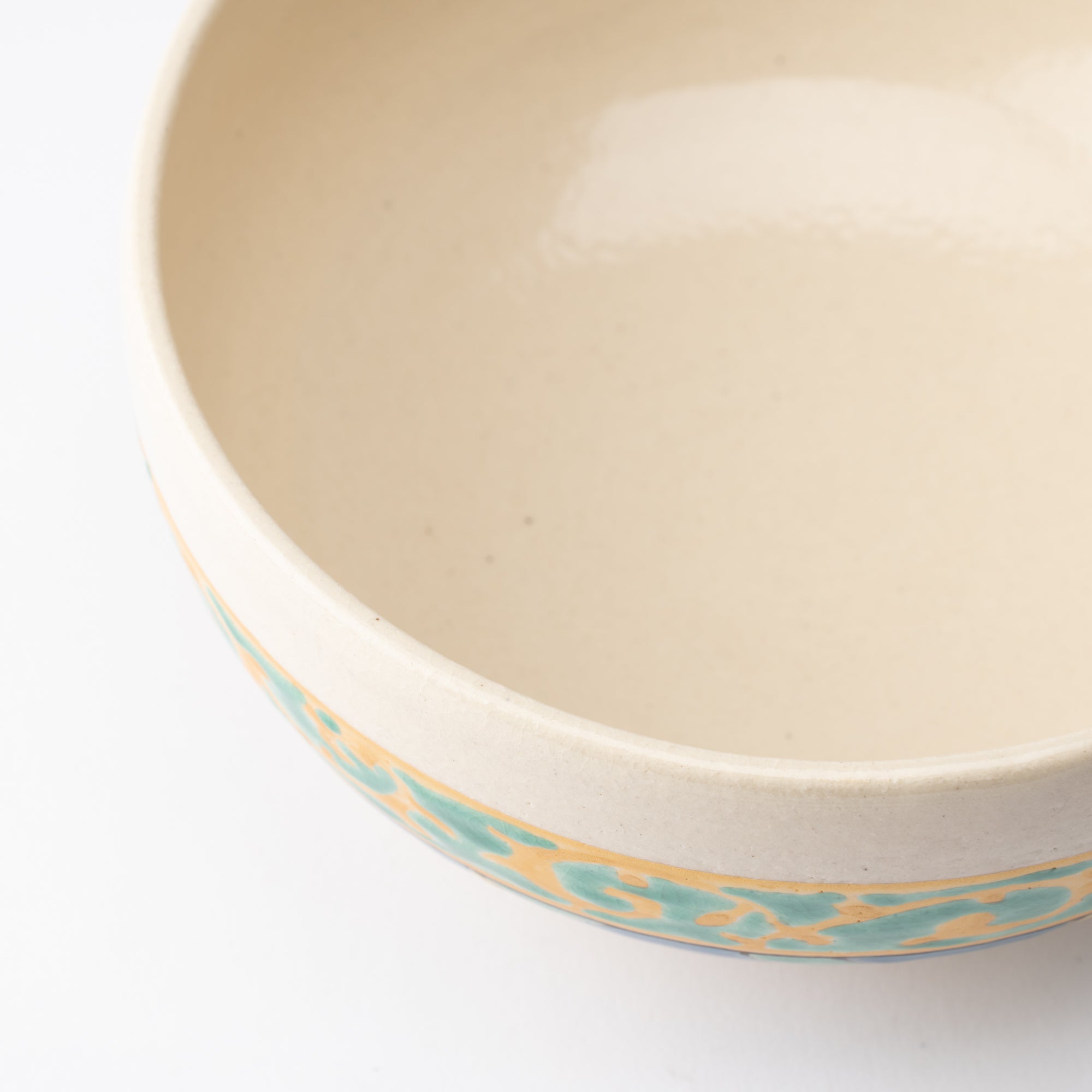
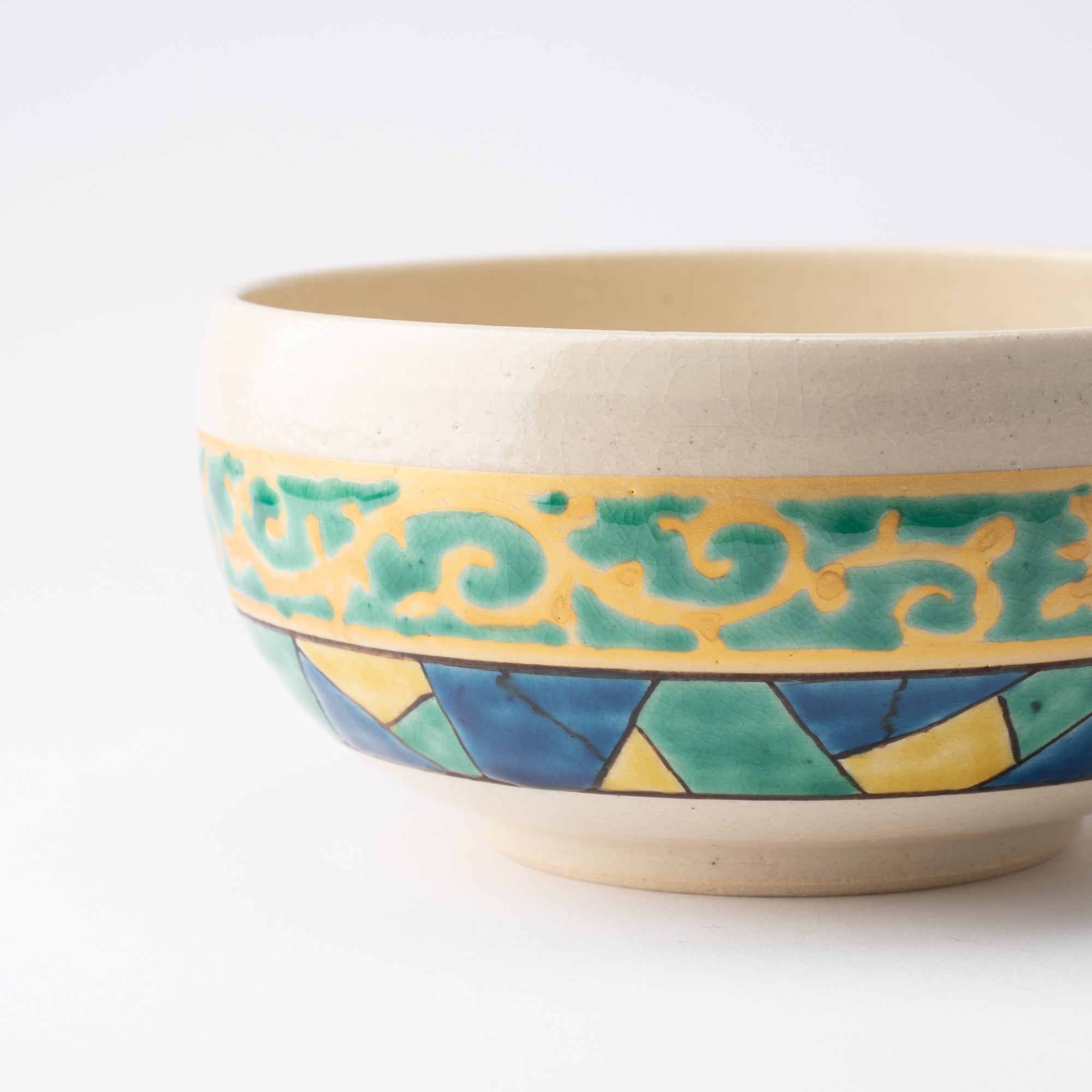
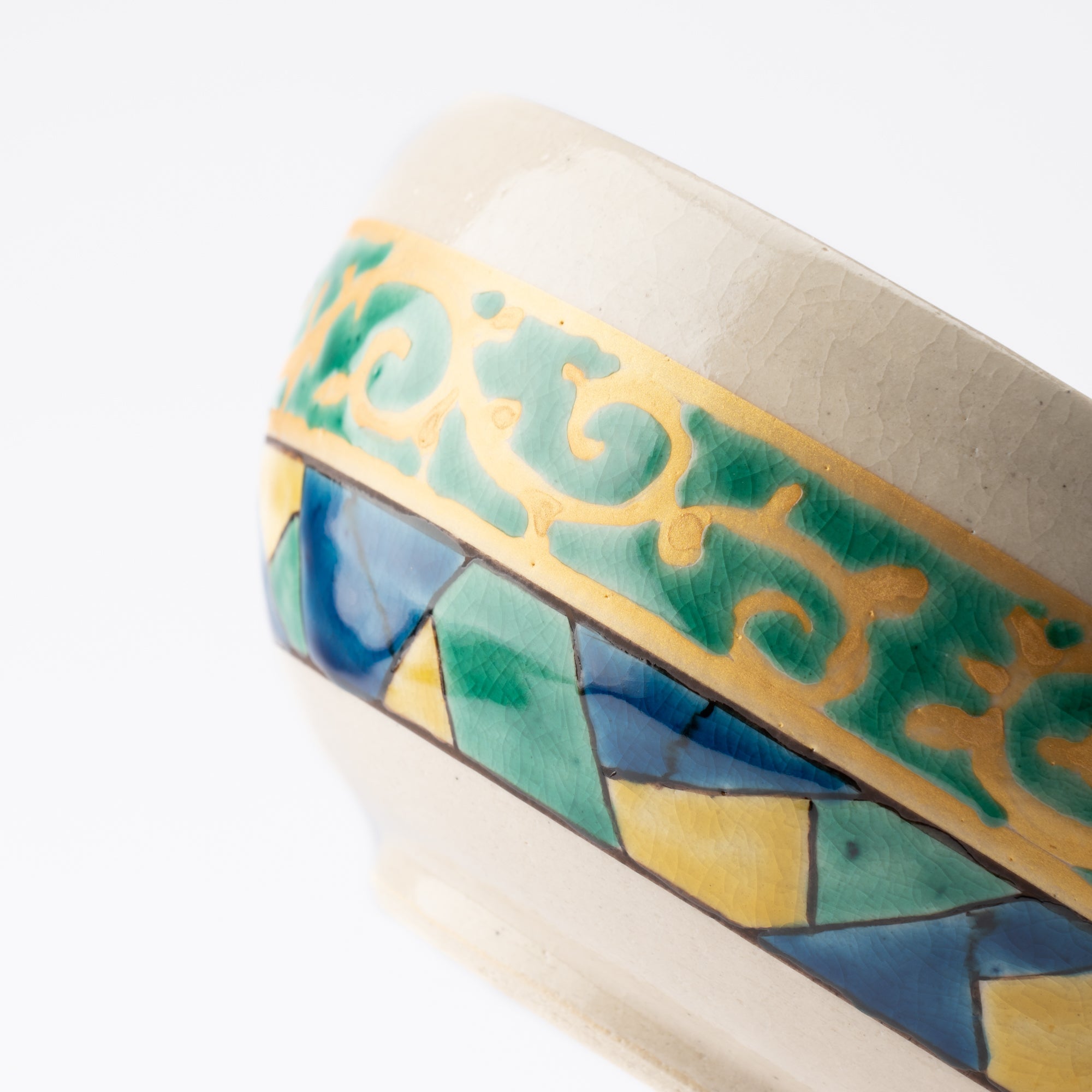
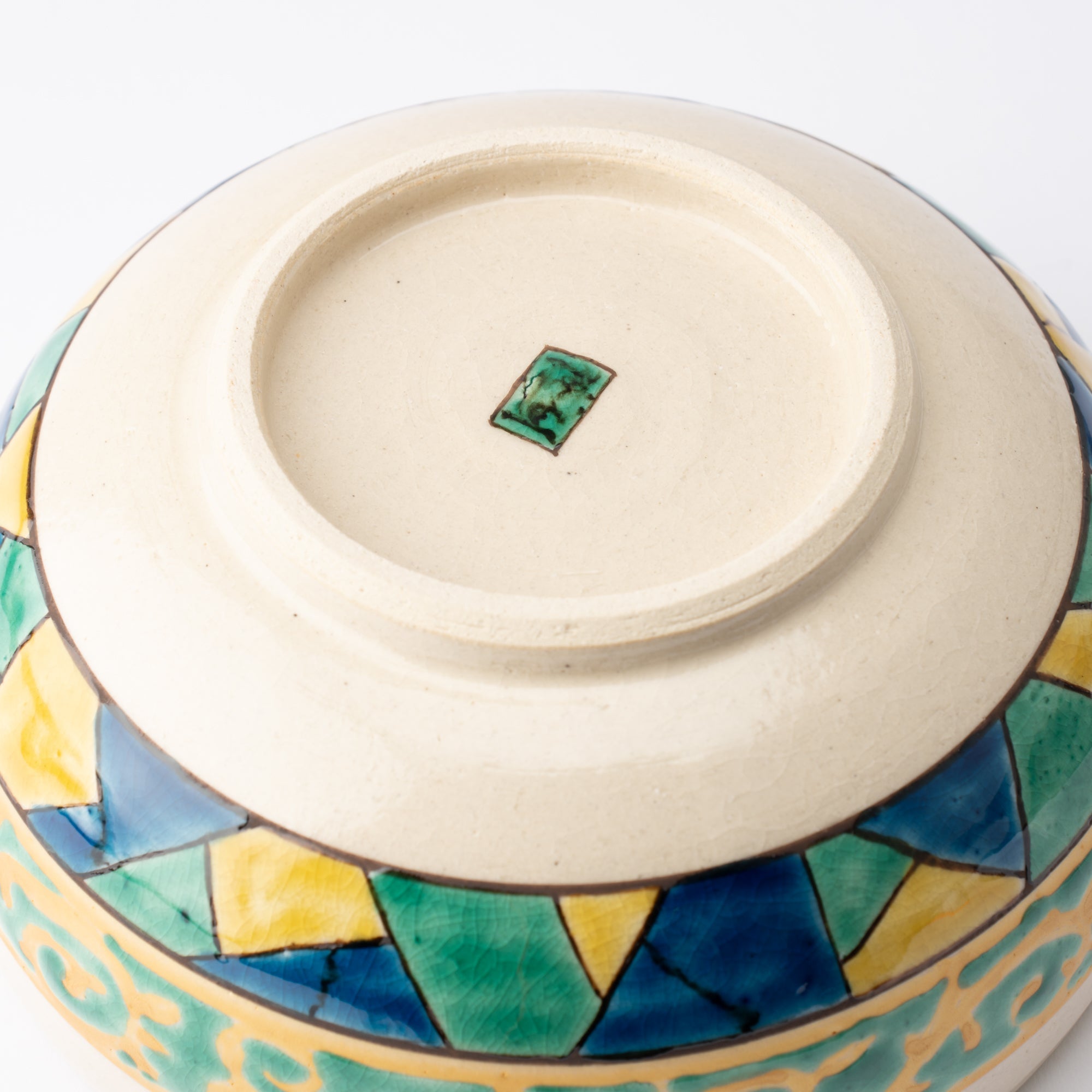
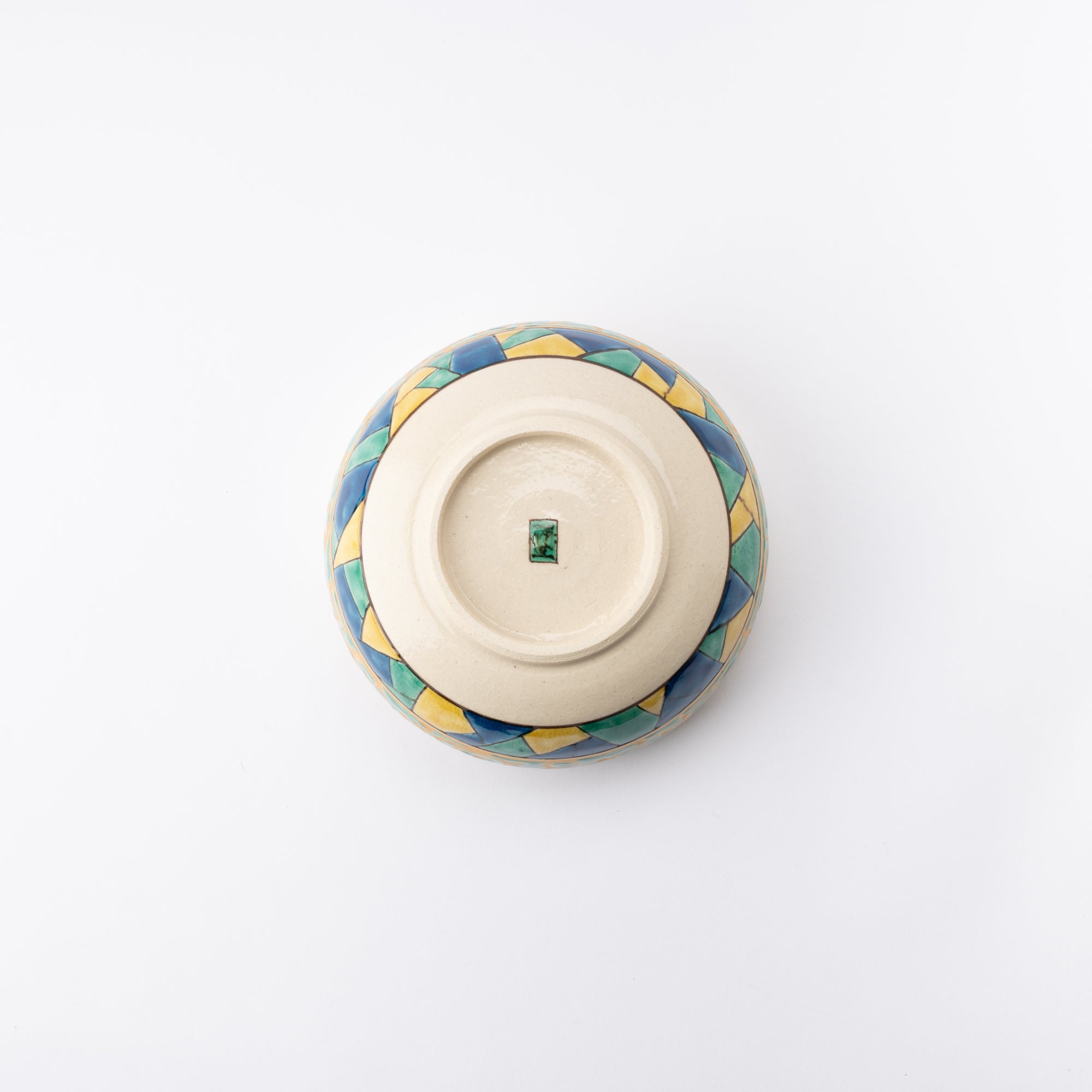
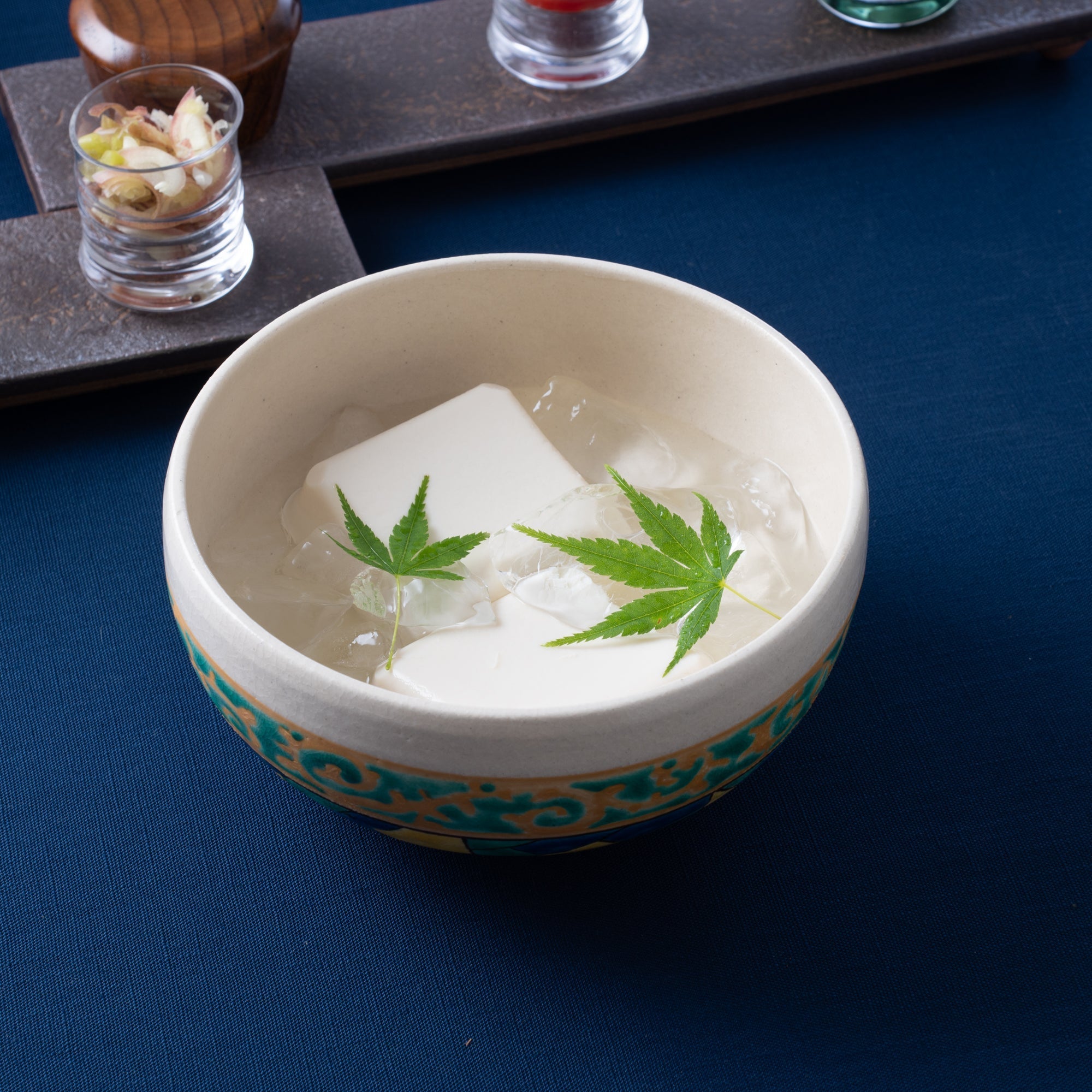
Arabesque and Cracked Ice Pattern Medium Bowl
Estimated Shipping Widget will be displayed here!
This large bowl features a gently rounded shape and a rustic stoneware texture that adds warmth to any table setting. Its practical design makes it easy to use, combining functionality with charm.
A stunning combination of jade green and gold arabesque patterns, delicately accented with a subtle gold shimmer, adorns the upper half. The lower half is decorated with a geometric cracked ice design, the distinctive crack-like kannyu texture beneath the glaze adds depth and character to the piece.
The bowl is perfect for donburi dishes like gyudon and oyakodon, and for simmered main dishes. It can also be used to serve noodle dishes like udon or soba. With its width and depth, it can easily hold generous portions of noodles and plenty of toppings.
DETAILS
| Quantity | 1 |
| Size | D 17.5 m (6.9 in) × H 8.5 cm (3.3 in) |
| Capacity | 1100 ml (37.1 fl oz) |
| Material | Stoneware |
| Microwave | No |
| Dishwasher | No |
Maker / Brand
To produce Kutani ware that is suitable for modern life and loved by people in Japan and abroad: that is the theme of Bitouen, a creator with a history of 100 years. It is their belief that Kutani patterns, with their depth and grandeur reminiscent of the Sea of Japan in winter, have both modernity and internationality.
They offer warm and easy-to-use tableware for everyday use, modeled on the masterpieces that have colored Kutani's history, including ko-Kutani, Yoshidaya, ko-sometsuke (blue and white porcelain), and Rosanjin.
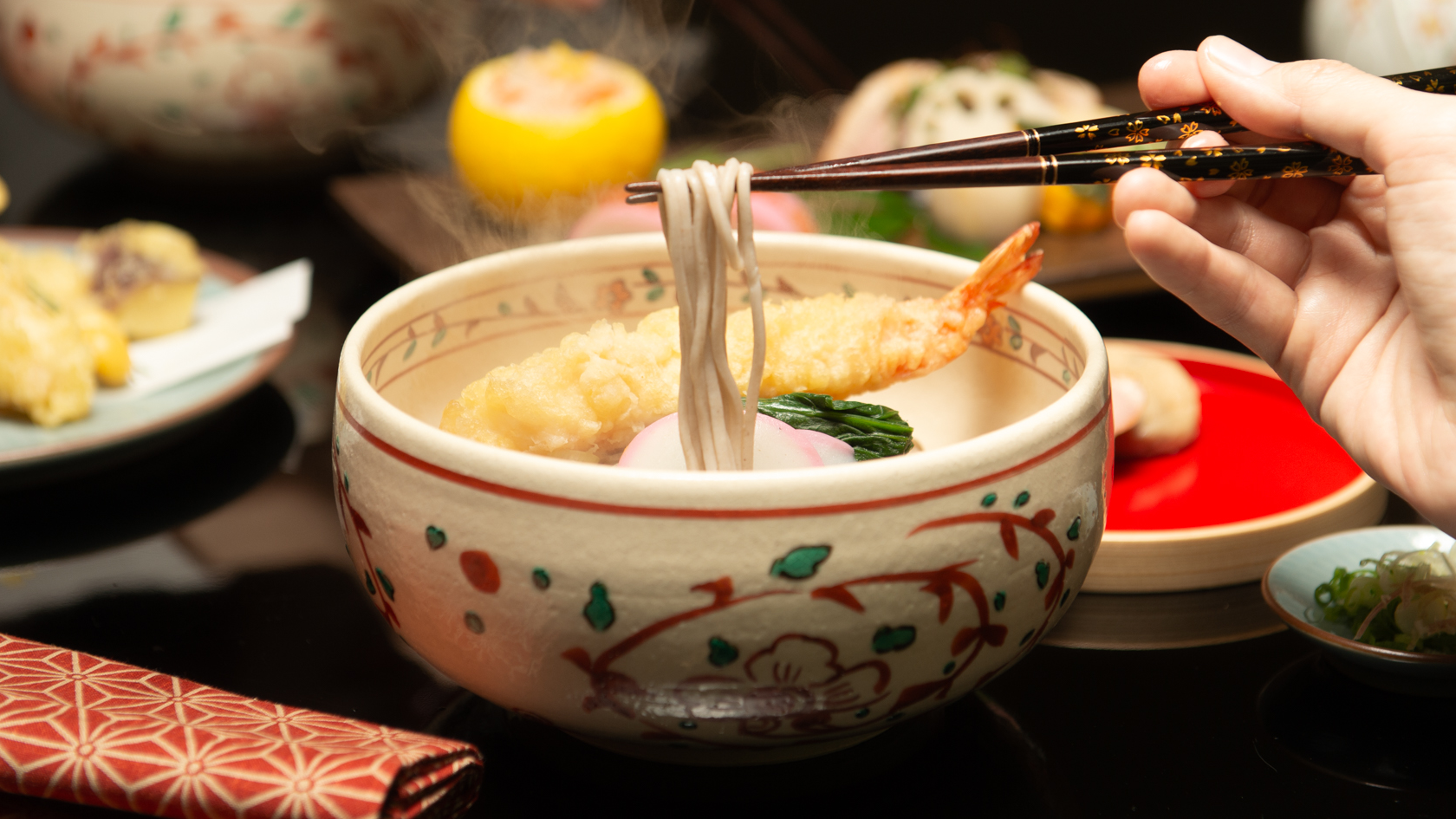
Crafts
Kutani ware is a pottery produced in the Kaga region of Ishikawa Prefecture, with a history spanning over 350 years. It is characterized by the heavy brilliance of the five colors of navy blue, red, purple, green, and yellow that are applied to the bold and daring lines. Its long history has evolved through the tireless efforts and enthusiasm of people who have sought innovation while maintaining tradition.
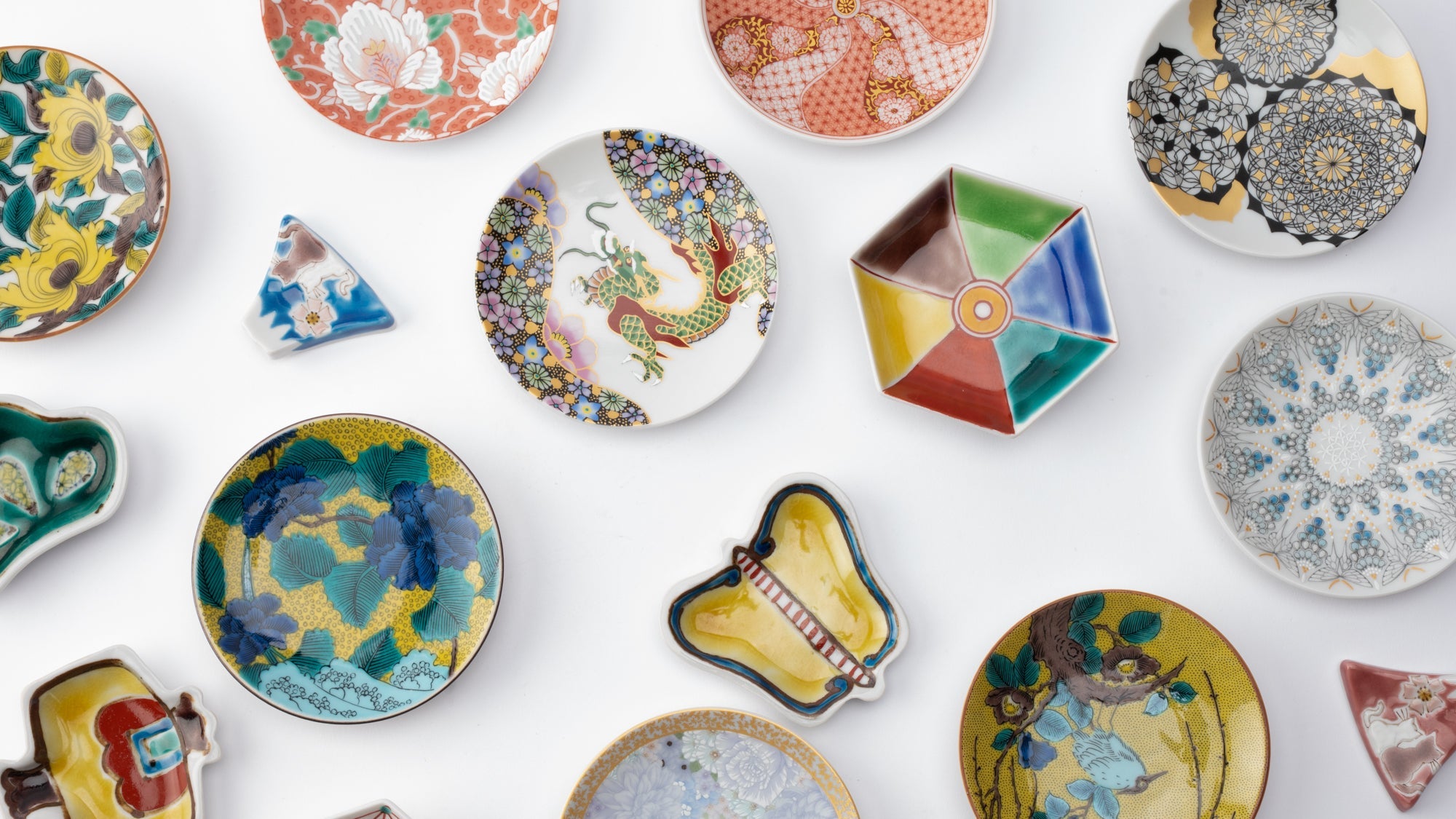
Choose options










Estimated Shipping Widget will be displayed here!
Medium Bowls
Medium-sized Japanese bowls are a highly versatile type of tableware. A great go-to for individual servings, they aren’t so big as to be overwhelming but are still large enough for main portions. Donburi dishes, nimono broth dishes, Western-style soups, cereal, and personal servings of salads will fit nicely in these bowls. They can also be used for serving sides or desserts. Our collection comes in a wide variety of patterns, colors, and shapes, making each piece not only convenient but also a stylish addition to your dining table.
This category includes bowls with diameters from 13–20.9 cm (5.1–8.2 in).
